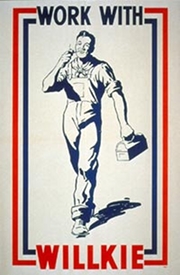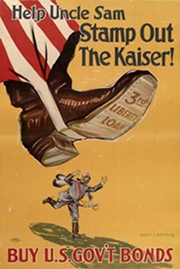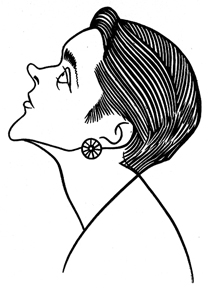Here are 10 things you should know about Richard Cromwell, born 114 years ago today. He made something of a splash in his early career, but never achieved enduring stardom.
Tag: Herbert Hoover
Times Square Tintypes: Eva Le Gallienne
IN GOD’S IMAGE
Happy birthday, Rose Marie
 Most folks over the age of thirty surely know the actress Rose Marie, who turns 89 years old today.
Most folks over the age of thirty surely know the actress Rose Marie, who turns 89 years old today.
After all, she starred as Sally Rogers on The Dick Van Dyke Show, one of the most acclaimed sit-coms of all time. She was a regular on the original Hollywood Squares, sitting just atop Paul Lynde in the center top square. And she appeared such later shows as Murphy Brown and Wings.
But did you know she was a hugely popular child star? It’s true. In 1926, at the age of three, she began performing as Baby Rose Marie. She had a brassy singing voice one doesn’t often find in someone so young, and by the age of five she had her own radio show on NBC.
She also worked the vaudeville circuits and made a number of appearances in movies, including a Vitaphone short that was on the bill with the first talking feature, The Jazz Singer. She even appeared at the White House three times, performing for Calvin Coolidge, Herbert Hoover and Franklin D. Roosevelt.
By her teens, she dropped the “Baby” and began the transition to a career as a singer. She made a go of it, continuing to work in nightclubs and acting on radio, in theatre and in pictures, but it was in the 1960s that her career really took off again.
We wish the happiest of birthdays to Ms. Marie, and we invite you to help us celebrate the occasion by watching this video from her days as a child star. This is a scene from 1933’s International House. Rose was 10 years old.
![]()
Pitch perfect: Vintage Political Slogans, pt. 2
 Our long march through the Williams Sunners’ 1949 tome, American Slogans, ends with this installment, which comprises vintage political slogans beginning with the letters S through Y from the chapter entitled “Political, Historical, Patriotic, Military.”
Our long march through the Williams Sunners’ 1949 tome, American Slogans, ends with this installment, which comprises vintage political slogans beginning with the letters S through Y from the chapter entitled “Political, Historical, Patriotic, Military.”
This chapter’s an odd one, as so many of the entries are personal statements and not slogans at all, and many, unlike those found in the book’s other chapters, date much farther back than the first half of the 20th century.
Still, the completist in us wouldn’t let us consider not sharing this chapter with you.
The Cladrite Reading Room continues next Monday, so check this space. We think you’ll like what we have in store for you.
Labor is king (Republican Presidential campaign), 1880.
Labor omnia vincit (State of Oklahoma).
Labor conquers all things (State of Oklahoma).
Lafayette, we are here (General John J. Pershing), June 13, 1917, France.
Land divided, the world united, The (Governor’s seal, Panama Canal Zone).
Let arms yield to the gown (State of Wyoming).
Let it be short, sharp, and decisive (Northern slogan), 1861.
Let liberty be national, and slavery sectional (Republican Pres. camp. 1860).
Let no guilty man escape (U. S. Grant), 1875.
L’etoile du nord (State of Minnesota).
Let the people rule (Andrew Jackson), 1832.
Let the welfare of the people be the supreme law (State of Missouri).
Let there be light (Carnegie libraries).
Let there be light and there was light (Order of Free and Accepted Masons).
Let us alone (big business), 1905.
Let us have peace (Republican Presidential campaign), 1868, for Grant.
Let us keep this honest man (1920).
Libertas et fidelitate (on reverse of State seal of Virginia).
Liberty and independence (State of Delaware).
Liberty and independence or death (American Revolution slogan).
Liberty and prosperity (State of New Jersey).
Liberty and Union (Abraham Lincoln), 1861-1865.
Liberty and union, now and forever, one and inseparable (Daniel Webster).
Liberty dearer than union (John C. Calhoun).
Liberty or death (Virginia Revolutionary regiments).
Liberty, prosperity and no stamps (anti-Stamp Act slogan), 1765.
Life of the land is preserved by righteousness (Hawaii).
Long live the President (George Washington’s adherents, 1791).
Look up, not down; look forward, not back; look out, not in and lend a hand (Edward Everett Hale).
Love thine enemy (Democratic National Convention), 1940.
 Make American the arsenal and the larder of Democracy (F. D. Roosevelt, 1941).
Make American the arsenal and the larder of Democracy (F. D. Roosevelt, 1941).
Make the world safe for Democracy (Woodrow Wilson), 1917.
Manly deeds, womanly words (State of Maryland).
Mayest thou endure forever (State Idaho).
McKinley and the full dinner pail (Republican Presidential campaign), 1900.
Meliorem lapsa locavit (State of South Carolina).
Millions for defense but not one cent for tribute (C. C. Pinckney).
Montani semper liberi (State of West Virginia).
Mountaineers are always free men (State of West Virginia).
My country, right or wrong (Stephen Decatur).
National Guard is for the Union, The (New York National Guard).
New Hampshire has no slogan or motto.
New order of ages, A (translation of slogan, obverse side of U. S. Great Seal).
Nil sine numine (State of Colorado).
No compromise, no more slavery (Republican Presidential campaign), 1846.
No fourth term, either (Republican presidential campaign), 1940.
No free trade (Republican Presidential campaign), 1880.
No more ’76 (Democratic Presidential campaign), 1876.
No quarter for Tories (Francis Marion).
No taxation without representation (American Colonies), 1765.
No terms except unconditional and immediate surrender can be accepted (U. S. Grant).
No third term (Republican Presidential campaign), 1940.
No union with slaveholders (W. L. Garrison).
Not worth a Continental (Money from American Revolutionary period).
Nothing without the Divinity (State of Colorado).
Novus ordo seclorum (Great Seal of the United States).
Now or never (pro-Annexationists), 1846.
N U T S! (General McAuliffe), World War II.
Read More »
Pitch perfect: Political slogans
 This week’s collection of slogans from William Sunners’ 1949 effort, American Slogans, is taken from a chapter entitled Political, Historical, Patriotic, Military. We’ll split this chapter into two entries, beginning this week with slogans from A-K.
This week’s collection of slogans from William Sunners’ 1949 effort, American Slogans, is taken from a chapter entitled Political, Historical, Patriotic, Military. We’ll split this chapter into two entries, beginning this week with slogans from A-K.
Ad astra per aspera (State of Kansas).
Addition, division and silence (1872).
Agriculture and commerce (State of Tennessee).
Aid short of war (World War II).
Alis volat propriis (former slogan of Oregon).
Alive and happy (Democratic presidential election of 1916).
Alki (State of Washington).
All for our country (State of Nevada).
All men are created equal (Declaration of Independence).
All quiet along the Potomac (in Washington D. C. during Civil War).
All we ask to be let alone (Confederate pre-Civil War slogan).
Although he is silent, he speaks (Modern Woman of the World).
Always do right. This will gratify some people and astonish the rest. (Governor Cross, Conn.).
Always ready (U. S. Coast Guard).
America calls (Democratic slogan, 1940, in behalf of Franklin D. Roosevelt).
America first (America First Part, 1939-41).
America first, last and all the time (World War II).
America for Americans (Know-Nothing Party), 1855.
America wants Wilkie! (Republican slogan, 1940, Presidential election).
Americans must rule America (Know-Nothing Party), 1855.
Americans to rule America (Know-Nothing Party), 1855.
An empire within an empire (former Ohio slogan).
An injury to one is the concern of all (Industrial Workers of the World).
Animis opibusque parati (State of South Carolina).
Annuit coeptis (Great Seal of the United States).
Anything to beat Grant (Democrats, Presidential campaign, 1880).
As Maine goes, so goes the nation (pre-election fallacy).
Atlanta must be destroyed (Union slogan, 1864).
Aut Caesar aut nihil (Democratic Presidential campaign, 1884).
Away with the New Deal and its inefficiency (Republican Presidential slogan, ’40).
 Back to normalcy with Harding (Republican Presidential campaign), 1920.
Back to normalcy with Harding (Republican Presidential campaign), 1920.
Be prepared (Boy Scouts of America).
Be sure you’re right, then go ahead (David Crockett), 1828.
Best of all governments is the one which teaches us to govern ourselves, The (John Adams High School, Cleveland).
Better a third-teamer than a third rater (Democratic Pres. Campaign, 1940).
Better to wear out than rust out (W. C. T. U.), Frances Elizabeth Willard.
Both regiments or none (Massachusetts Bay Colony, 1770).
Breathing spell (Franklin Delano Roosevelt), 1935.
Bury the hatchet (slogan for peace by American Indians).
By and By (State of Washington).
By valor of arms (State of Mississippi).
By her sword she seeks under liberty a calm repose (Massachusetts).
Capitol is in danger, The (Washington D. C.), 1861 (Union slogan).
Cash and carry (Franklin D. Roosevelt’s slogan, 1937).
Cedant arma togae (State of Wyoming).
Cervus alces (Benevolent and Protective Order of Elks).
Charge! And remember Jackson (Confederates at second Chancellorsville Battle).
Chicken in every pot, A (Republican Presidential campaign, 1928).
Chinese must go, The (Workingmen’s Trade and Labor Union), 1890.
Constitution and the Flag, one and inseparable, now and forever (National Democratic Convention), 1900.
Coolidge or chaos (Republican Presidential campaign), 1924.
Cotton is king (slogan of the South).
Crescit eundo (State of New Mexico).
Crossroads of America, The (State of Indiana).
Read More »

